 As with many of my friends and fellow gardeners around North America, I've been dealing with some erratic autumn weather this October. A week or so back, I despaired of having any real good foliage colour in the garden. But the past few days, the wind has died out, we had a couple of very good rains, the evenings have been cool and the days warm. Thursday we were bathed in a crystal blue October day here in the Annapolis Valley, and my camera and garden called me to come out and visit.
As with many of my friends and fellow gardeners around North America, I've been dealing with some erratic autumn weather this October. A week or so back, I despaired of having any real good foliage colour in the garden. But the past few days, the wind has died out, we had a couple of very good rains, the evenings have been cool and the days warm. Thursday we were bathed in a crystal blue October day here in the Annapolis Valley, and my camera and garden called me to come out and visit. The past couple of years, my Hamamelis 'Diane' hasn't displayed much for fall colour because the wind has beaten the foliage off. But this year, the plant has been settled in and growing since 2007, it put on a lot of growth over the summer, and decided to reward me in just the past couple of days with some very satisfying colour.
 Much smaller in shrub size at this time, but no less beautiful, is the native witchhazel in my garden, Hamamelis virginiana. It has cast its leaves, but a couple of them lay gleaming in the soggy grass nearby.
Much smaller in shrub size at this time, but no less beautiful, is the native witchhazel in my garden, Hamamelis virginiana. It has cast its leaves, but a couple of them lay gleaming in the soggy grass nearby.
 It's always fun when you learn about a new plant, acquire that plant, and then discover it in many different locations. This is the Gro-low Sumac (Rhus aromatica), which I read about in the course of doing my book research and which I soon after located and planted. There are a number of these low-growing sumacs planted out in Wolfville, and as they start to put on their fall finery, you can see why. I'm partial to the common Rhus typhina, always, so I knew I'd love this one too.
It's always fun when you learn about a new plant, acquire that plant, and then discover it in many different locations. This is the Gro-low Sumac (Rhus aromatica), which I read about in the course of doing my book research and which I soon after located and planted. There are a number of these low-growing sumacs planted out in Wolfville, and as they start to put on their fall finery, you can see why. I'm partial to the common Rhus typhina, always, so I knew I'd love this one too.
 While I love lilacs in general, most of them flower and then are sort of uninteresting the rest of the season. Not so the dwarf Korean lilac, Syringa meyeri 'Palibin'. Not only does it sometimes put up some late-season blooms, it rewards me with a lovely buttery foliage colour, sometimes suffused with pink. I notice when checking the spelling of the cultivar name that many people don't report fall colour in their 'Palibin', so I don't know whether it's because we have colder weather, or what the story is. But you can bet I'm going to find out.
While I love lilacs in general, most of them flower and then are sort of uninteresting the rest of the season. Not so the dwarf Korean lilac, Syringa meyeri 'Palibin'. Not only does it sometimes put up some late-season blooms, it rewards me with a lovely buttery foliage colour, sometimes suffused with pink. I notice when checking the spelling of the cultivar name that many people don't report fall colour in their 'Palibin', so I don't know whether it's because we have colder weather, or what the story is. But you can bet I'm going to find out.
 My hydrangeas are putting on some really interesting colour displays this year, and the most spectacular showoff is the awesome 'QuickFire'. I don't even know how to describe these colours other than mesmerizing. This shrub is planted not far from Miscanthus 'Malepartus', which is actually doing a good colour echo right now.
My hydrangeas are putting on some really interesting colour displays this year, and the most spectacular showoff is the awesome 'QuickFire'. I don't even know how to describe these colours other than mesmerizing. This shrub is planted not far from Miscanthus 'Malepartus', which is actually doing a good colour echo right now.
 Some of the perennials are taking this opportunity to throw a few more blooms. The always tenacious catmint 'Walkers Low' is covered in drifts of tiny blue-lavender flowers.
Some of the perennials are taking this opportunity to throw a few more blooms. The always tenacious catmint 'Walkers Low' is covered in drifts of tiny blue-lavender flowers.
 And there are still a few amazingly blue stems of Eryngium planum, flat sea holly, sending up a cooling contrast in the lower front garden.
And there are still a few amazingly blue stems of Eryngium planum, flat sea holly, sending up a cooling contrast in the lower front garden.
 Finding a flower on my Ozark sundrop (Oenothera missouriensis) this afternoon was a complete surprise and thrill. Even though a bit bedraggled by last night's rain, the flower is still marvelous.
Finding a flower on my Ozark sundrop (Oenothera missouriensis) this afternoon was a complete surprise and thrill. Even though a bit bedraggled by last night's rain, the flower is still marvelous.
 The warm weather prompted quite a bit of insect activity, including this moth on a fall chrysanthemum.
The warm weather prompted quite a bit of insect activity, including this moth on a fall chrysanthemum.
 And to finish off the day, the sun rewarded us with an awesome Bay of Fundy sunset, the perfect way to celebrate Skywatch Friday.
And to finish off the day, the sun rewarded us with an awesome Bay of Fundy sunset, the perfect way to celebrate Skywatch Friday.
 Much smaller in shrub size at this time, but no less beautiful, is the native witchhazel in my garden, Hamamelis virginiana. It has cast its leaves, but a couple of them lay gleaming in the soggy grass nearby.
Much smaller in shrub size at this time, but no less beautiful, is the native witchhazel in my garden, Hamamelis virginiana. It has cast its leaves, but a couple of them lay gleaming in the soggy grass nearby. It's always fun when you learn about a new plant, acquire that plant, and then discover it in many different locations. This is the Gro-low Sumac (Rhus aromatica), which I read about in the course of doing my book research and which I soon after located and planted. There are a number of these low-growing sumacs planted out in Wolfville, and as they start to put on their fall finery, you can see why. I'm partial to the common Rhus typhina, always, so I knew I'd love this one too.
It's always fun when you learn about a new plant, acquire that plant, and then discover it in many different locations. This is the Gro-low Sumac (Rhus aromatica), which I read about in the course of doing my book research and which I soon after located and planted. There are a number of these low-growing sumacs planted out in Wolfville, and as they start to put on their fall finery, you can see why. I'm partial to the common Rhus typhina, always, so I knew I'd love this one too.  While I love lilacs in general, most of them flower and then are sort of uninteresting the rest of the season. Not so the dwarf Korean lilac, Syringa meyeri 'Palibin'. Not only does it sometimes put up some late-season blooms, it rewards me with a lovely buttery foliage colour, sometimes suffused with pink. I notice when checking the spelling of the cultivar name that many people don't report fall colour in their 'Palibin', so I don't know whether it's because we have colder weather, or what the story is. But you can bet I'm going to find out.
While I love lilacs in general, most of them flower and then are sort of uninteresting the rest of the season. Not so the dwarf Korean lilac, Syringa meyeri 'Palibin'. Not only does it sometimes put up some late-season blooms, it rewards me with a lovely buttery foliage colour, sometimes suffused with pink. I notice when checking the spelling of the cultivar name that many people don't report fall colour in their 'Palibin', so I don't know whether it's because we have colder weather, or what the story is. But you can bet I'm going to find out. My hydrangeas are putting on some really interesting colour displays this year, and the most spectacular showoff is the awesome 'QuickFire'. I don't even know how to describe these colours other than mesmerizing. This shrub is planted not far from Miscanthus 'Malepartus', which is actually doing a good colour echo right now.
My hydrangeas are putting on some really interesting colour displays this year, and the most spectacular showoff is the awesome 'QuickFire'. I don't even know how to describe these colours other than mesmerizing. This shrub is planted not far from Miscanthus 'Malepartus', which is actually doing a good colour echo right now. Some of the perennials are taking this opportunity to throw a few more blooms. The always tenacious catmint 'Walkers Low' is covered in drifts of tiny blue-lavender flowers.
Some of the perennials are taking this opportunity to throw a few more blooms. The always tenacious catmint 'Walkers Low' is covered in drifts of tiny blue-lavender flowers. And there are still a few amazingly blue stems of Eryngium planum, flat sea holly, sending up a cooling contrast in the lower front garden.
And there are still a few amazingly blue stems of Eryngium planum, flat sea holly, sending up a cooling contrast in the lower front garden. Finding a flower on my Ozark sundrop (Oenothera missouriensis) this afternoon was a complete surprise and thrill. Even though a bit bedraggled by last night's rain, the flower is still marvelous.
Finding a flower on my Ozark sundrop (Oenothera missouriensis) this afternoon was a complete surprise and thrill. Even though a bit bedraggled by last night's rain, the flower is still marvelous. The warm weather prompted quite a bit of insect activity, including this moth on a fall chrysanthemum.
The warm weather prompted quite a bit of insect activity, including this moth on a fall chrysanthemum. And to finish off the day, the sun rewarded us with an awesome Bay of Fundy sunset, the perfect way to celebrate Skywatch Friday.
And to finish off the day, the sun rewarded us with an awesome Bay of Fundy sunset, the perfect way to celebrate Skywatch Friday.























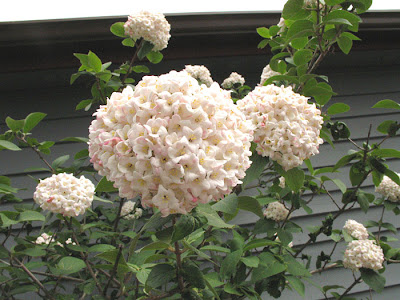










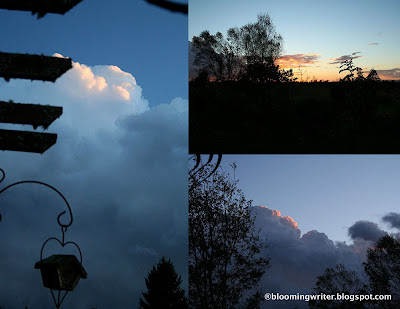




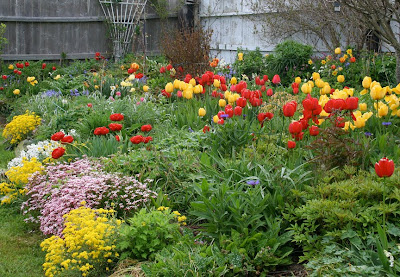
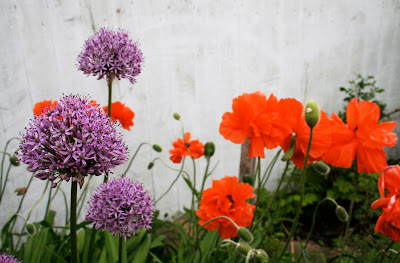
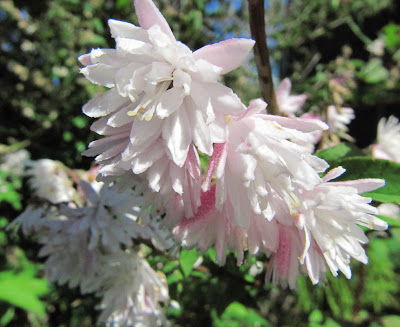
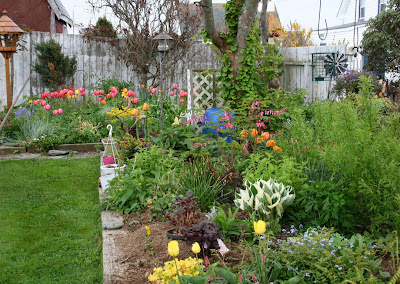
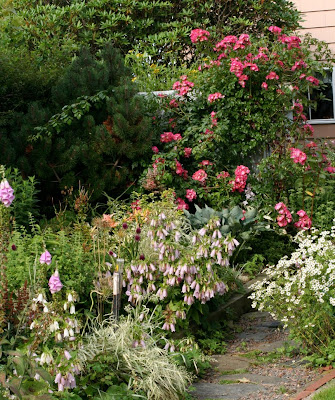

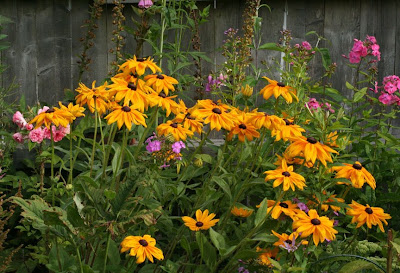

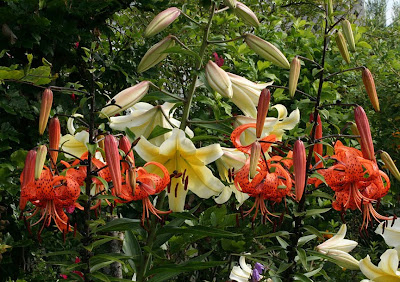
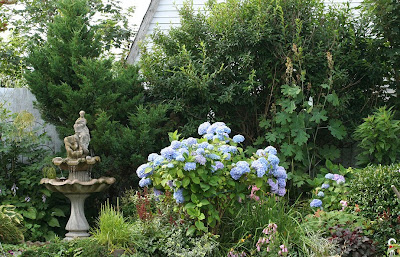
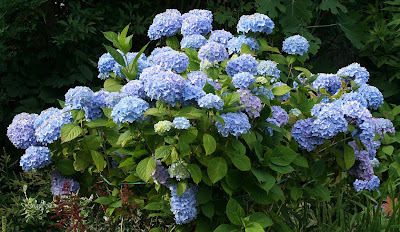
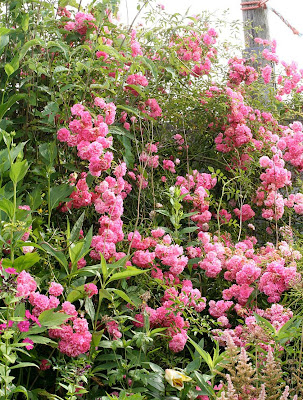
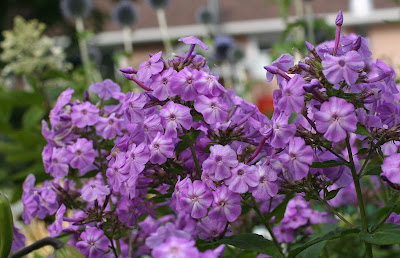
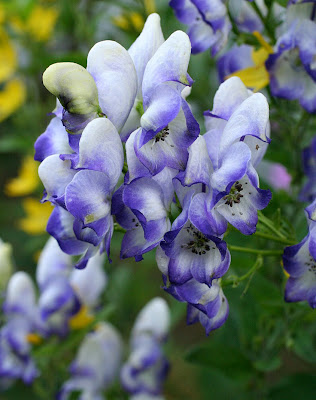
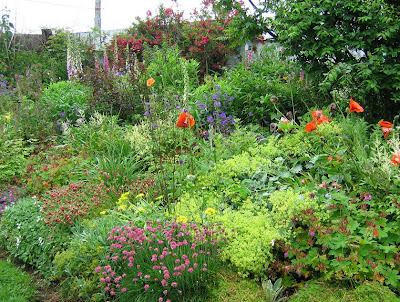.jpg)
